BMW i7 vs Tesla Model 3 – Which model is better for everyday use?
Everyday use, family trips or long-distance drives – here’s where the differences show.
Discover whether BMW i7 or Tesla Model 3 fits your lifestyle better.
Costs and Efficiency:
When it comes to price and running costs, the biggest differences usually appear. This is often where you see which car fits your budget better in the long run.
Tesla Model 3 has a significantly advantage in terms of price – it starts at 34300 £, while the BMW i7 costs 99200 £. That’s a price difference of around 64894 £.
In terms of energy consumption, the advantage goes to the Tesla Model 3: with 13.20 kWh per 100 km, it’s significantly more efficient than the BMW i7 with 18.50 kWh. That’s a difference of about 5.30 kWh.
As for range, the Tesla Model 3 performs somewhat better – achieving up to 702 km, about 78 km more than the BMW i7.
Engine and Performance:
Under the bonnet, it becomes clear which model is tuned for sportiness and which one takes the lead when you hit the accelerator.
When it comes to engine power, the BMW i7 has a evident edge – offering 659 HP compared to 460 HP. That’s roughly 199 HP more horsepower.
In acceleration from 0 to 100 km/h, the Tesla Model 3 is slightly quicker – completing the sprint in 3.10 s, while the BMW i7 takes 3.70 s. That’s about 0.60 s faster.
In terms of top speed, the Tesla Model 3 performs slight better – reaching 262 km/h, while the BMW i7 tops out at 250 km/h. The difference is around 12 km/h.
There’s also a difference in torque: BMW i7 pulls clearly perceptible stronger with 1100 Nm compared to 660 Nm. That’s about 440 Nm difference.
Space and Everyday Use:
Cabin size, boot volume and payload all play a role in everyday practicality. Here, comfort and flexibility make the difference.
Both vehicles offer seating for 5 people.
In curb weight, Tesla Model 3 is clearly lighter – 1822 kg compared to 2595 kg. The difference is around 773 kg.
In terms of boot space, the Tesla Model 3 offers somewhat more room – 594 L compared to 500 L. That’s a difference of about 94 L.
When it comes to payload, BMW i7 distinct takes the win – 535 kg compared to 333 kg. That’s a difference of about 202 kg.
Who comes out on top?
Overall, the Tesla Model 3 shows itself to be outperforms in nearly all aspects and secures the title of DriveDuel Champion.
It convinces with the more balanced overall package and proves to be the more versatile choice for everyday use.

Tesla Model 3
BMW i7
The new BMW i7 epitomises luxury and innovation, seamlessly blending advanced technology with elegant design. Its interior offers an unparalleled experience, with premium materials and cutting-edge features that create a tranquil yet engaging atmosphere for both driver and passengers. The i7's performance is both dynamic and efficient, demonstrating BMW's commitment to sustainable driving without compromising on the exhilarating drive the brand is known for.
details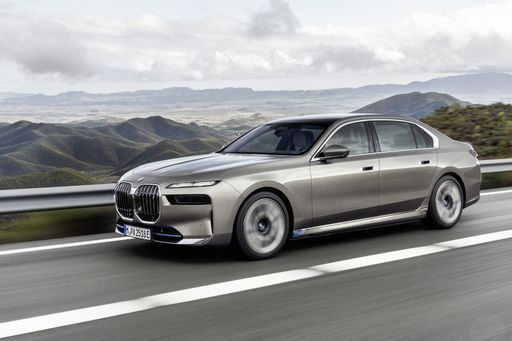 @ press.bmwgroup.com
@ press.bmwgroup.com
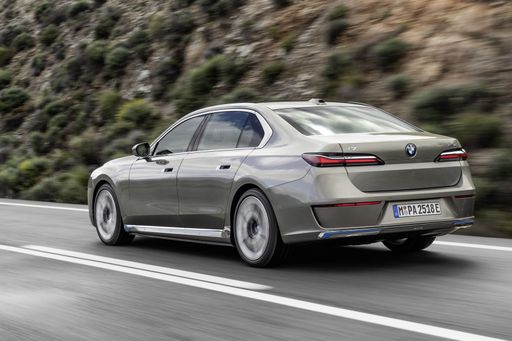 @ press.bmwgroup.com
@ press.bmwgroup.com
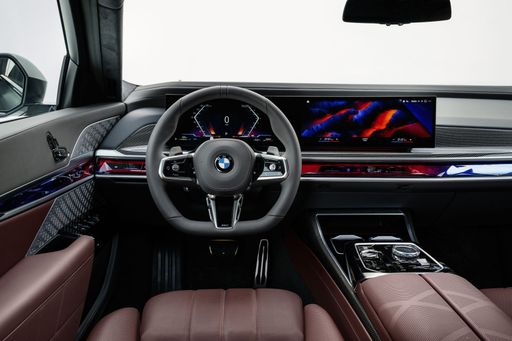 @ press.bmwgroup.com
@ press.bmwgroup.com
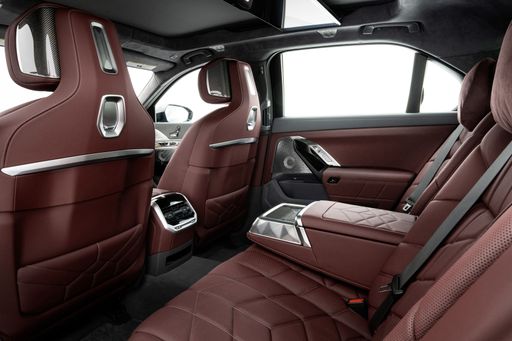 @ press.bmwgroup.com
@ press.bmwgroup.com
Tesla Model 3
The Tesla Model 3 stands out in the electric vehicle market with its sleek design and impressive performance capabilities. It offers a seamless driving experience that combines advanced technology with minimalistic interiors, creating a futuristic feel on the road. Additionally, its range and charging infrastructure make it a practical choice for both city commuting and longer journeys.
details @ tesla.com
@ tesla.com
 @ tesla.com
@ tesla.com
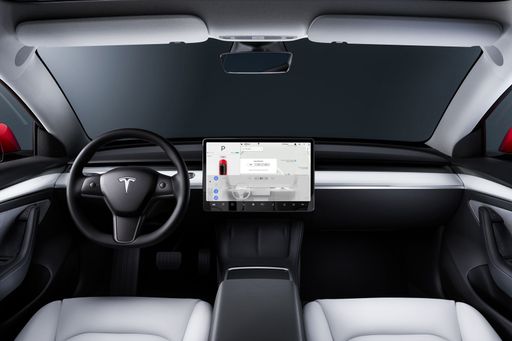 @ tesla.com
@ tesla.com
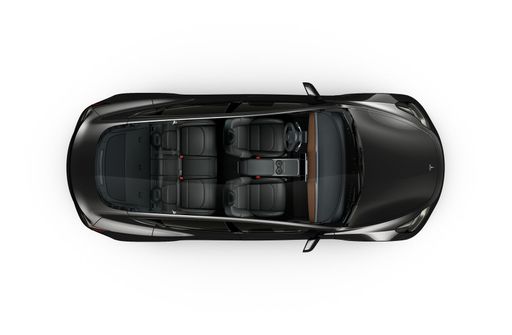 @ tesla.com
@ tesla.com

|

|
|
|
|
Costs and Consumption |
|
|---|---|
|
Price
99200 - 157000 £
|
Price
34300 - 50100 £
|
|
Consumption L/100km
-
|
Consumption L/100km
-
|
|
Consumption kWh/100km
18.5 - 20.8 kWh
|
Consumption kWh/100km
13.2 - 16.7 kWh
|
|
Electric Range
559 - 624 km
|
Electric Range
513 - 702 km
|
|
Battery Capacity
101.70 kWh
|
Battery Capacity
64.5 - 79 kWh
|
|
co2
0 g/km
|
co2
0 g/km
|
|
Fuel tank capacity
-
|
Fuel tank capacity
-
|
Dimensions and Body |
|
|---|---|
|
Body Type
Sedan
|
Body Type
Sedan, Hatchback
|
|
Seats
5
|
Seats
5
|
|
Doors
4
|
Doors
4 - 5
|
|
Curb weight
2595 - 2770 kg
|
Curb weight
1822 - 1929 kg
|
|
Trunk capacity
500 L
|
Trunk capacity
594 L
|
|
Length
5391 mm
|
Length
4720 - 4724 mm
|
|
Width
1950 mm
|
Width
1850 mm
|
|
Height
1544 mm
|
Height
1431 - 1440 mm
|
|
Max trunk capacity
-
|
Max trunk capacity
-
|
|
Payload
480 - 535 kg
|
Payload
303 - 333 kg
|
Engine and Performance |
|
|---|---|
|
Engine Type
Electric
|
Engine Type
Electric
|
|
Transmission
Automatic
|
Transmission
Automatic
|
|
Transmission Detail
Reduction Gearbox
|
Transmission Detail
Reduction Gearbox
|
|
Drive Type
Rear-Wheel Drive, All-Wheel Drive
|
Drive Type
Rear-Wheel Drive, All-Wheel Drive
|
|
Power HP
455 - 659 HP
|
Power HP
283 - 460 HP
|
|
Acceleration 0-100km/h
3.7 - 5.5 s
|
Acceleration 0-100km/h
3.1 - 6.1 s
|
|
Max Speed
205 - 250 km/h
|
Max Speed
201 - 262 km/h
|
|
Torque
650 - 1100 Nm
|
Torque
420 - 660 Nm
|
|
Number of Cylinders
-
|
Number of Cylinders
-
|
|
Power kW
335 - 485 kW
|
Power kW
208 - 338 kW
|
|
Engine capacity
-
|
Engine capacity
-
|
General |
|
|---|---|
|
Model Year
2022 - 2023
|
Model Year
2023 - 2024
|
|
CO2 Efficiency Class
A
|
CO2 Efficiency Class
A
|
|
Brand
BMW
|
Brand
Tesla
|
Is the BMW i7 offered with different drivetrains?
Available configurations include Rear-Wheel Drive or All-Wheel Drive.
The prices and data displayed are estimates based on German list prices and may vary by country. This information is not legally binding.
